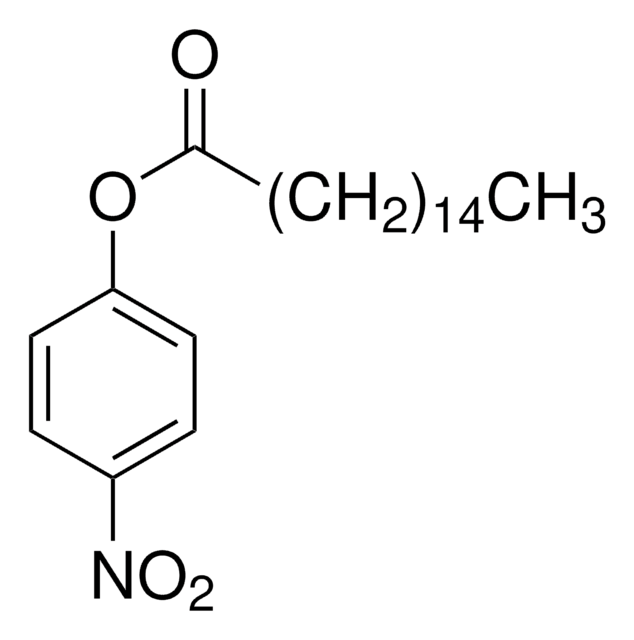Kluczowe dokumenty
701122
Iron(III) chloride
sublimed grade, ≥99.9% trace metals basis
Synonim(y):
Ferric chloride, Iron trichloride, Molysite
About This Item
Polecane produkty
klasa czystości
sublimed grade
Poziom jakości
gęstość pary
5.61 (vs air)
ciśnienie pary
1 mmHg ( 194 °C)
Próba
≥99.9% trace metals basis
Postać
powder or crystals
przydatność reakcji
reagent type: catalyst
core: iron
charakterystyka ekologicznej alternatywy
Catalysis
Learn more about the Principles of Green Chemistry.
sustainability
Greener Alternative Product
metody
cell culture | mammalian: suitable
zanieczyszczenia
≤1000.0 ppm Trace Metal Analysis
mp
304 °C (lit.)
Zastosowanie
battery manufacturing
kategoria ekologicznej alternatywy
ciąg SMILES
Cl[Fe](Cl)Cl
InChI
1S/3ClH.Fe/h3*1H;/q;;;+3/p-3
Klucz InChI
RBTARNINKXHZNM-UHFFFAOYSA-K
Szukasz podobnych produktów? Odwiedź Przewodnik dotyczący porównywania produktów
Opis ogólny
Zastosowanie
- As a precursor to prepare Fe(III)-chlorophyll complex. Fe(III) enhances the performance of chlorophyll as a dye sensitizer in DSSCs by forming complex compounds with metal-ligand charge transfer properties, leading to increased efficiency and improved paramagnetic properties.
- As a catalyst /modifying agent to prepare high performance porous carbon for lithium-ion battery anodes. The addition of FeCl3 enhances the graphitization of porous carbon without significantly affecting the layer spacing and also the specific surface area and pore volume of porous carbon.
- As a co-catalyst to fabricate liquid catalyzed fuel cell (LCFC) for direct conversion from carbohydrates to electricity. It helps to improve the hydrolysis of carbohydrate and enhances the electron transfer from carbohydrates to anode.
Hasło ostrzegawcze
Danger
Zwroty wskazujące rodzaj zagrożenia
Zwroty wskazujące środki ostrożności
Klasyfikacja zagrożeń
Acute Tox. 4 Oral - Eye Dam. 1 - Met. Corr. 1 - Skin Irrit. 2
Kod klasy składowania
8B - Non-combustible corrosive hazardous materials
Klasa zagrożenia wodnego (WGK)
WGK 1
Temperatura zapłonu (°F)
Not applicable
Temperatura zapłonu (°C)
Not applicable
Środki ochrony indywidualnej
dust mask type N95 (US), Eyeshields, Faceshields, Gloves
Wybierz jedną z najnowszych wersji:
Masz już ten produkt?
Dokumenty związane z niedawno zakupionymi produktami zostały zamieszczone w Bibliotece dokumentów.
Klienci oglądali również te produkty
Produkty
Professor Randal Lee (University of Houston, USA) discusses design considerations for iron oxide magnetic nanospheres and nanocubes used for biosensing, including synthetic procedures, size, and shape. The effects of these variables are discussed for various volumetric-based and surface-based detection schemes.
Lithium-Ion Battery Performance: Dependence on Material Synthesis and Post‑Treatment Methods
Nasz zespół naukowców ma doświadczenie we wszystkich obszarach badań, w tym w naukach przyrodniczych, materiałoznawstwie, syntezie chemicznej, chromatografii, analityce i wielu innych dziedzinach.
Skontaktuj się z zespołem ds. pomocy technicznej







